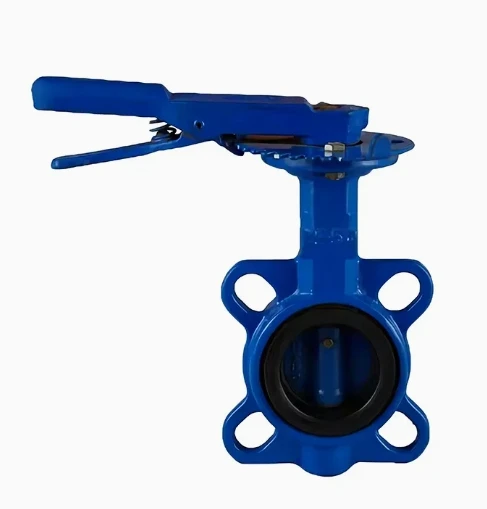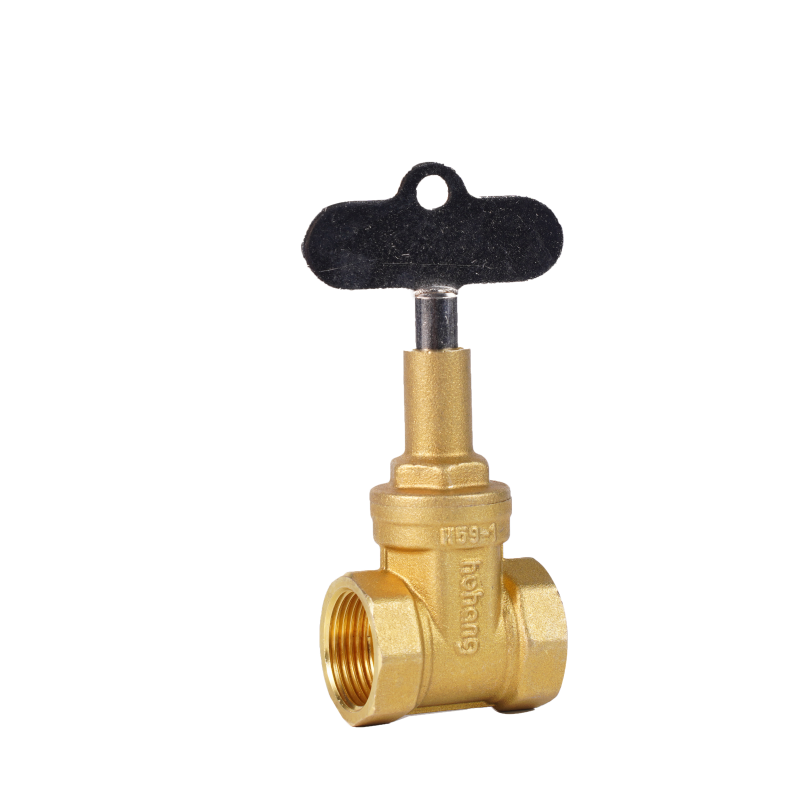Industrial pipeline systems operating at large diameters require specialized valve solutions that can efficiently control flow while maintaining cost-effectiveness and operational reliability. Butterfly valves have emerged as the preferred choice for many large-diameter applications due to their unique design characteristics and performance advantages. These quarter-turn valves offer exceptional flow control capabilities while occupying minimal space within pipeline configurations, making them particularly valuable for water treatment facilities, oil and gas transmission systems, and chemical processing plants where space optimization and operational efficiency are paramount.

Design Fundamentals and Flow Characteristics
Disc Configuration and Flow Dynamics
The fundamental design of butterfly valves centers around a circular disc that rotates on a perpendicular axis within the pipeline bore. This configuration allows for streamlined flow when fully open, as the disc aligns parallel to the flow direction, creating minimal obstruction. Unlike gate or globe valves that require significant linear movement and create turbulent flow patterns, butterfly valves provide smooth flow transition with reduced pressure drop across the valve body. The disc thickness remains constant regardless of valve size, making large-diameter butterfly valves particularly economical compared to other valve types where material requirements increase exponentially with size.
The flow coefficient characteristics of butterfly valves demonstrate superior performance in large-diameter applications. When fully open, the effective flow area approaches the full pipe bore diameter, with only the disc thickness and stem creating minor flow restrictions. This design principle becomes increasingly advantageous as pipeline diameters increase, since the relative impact of these obstructions decreases proportionally. Advanced computational fluid dynamics studies have shown that properly designed butterfly valves can achieve flow coefficients exceeding 90 percent of the theoretical maximum for large-diameter installations.
Seat Design and Sealing Technology
Modern butterfly valves incorporate sophisticated sealing systems that ensure reliable shut-off performance across varying pressure and temperature conditions. The seat design typically features resilient materials such as EPDM, NBR, or PTFE that conform to the disc periphery when the valve closes. This flexible sealing approach accommodates thermal expansion, pipeline settlement, and minor disc wear while maintaining tight shut-off capabilities. The seat configuration can be adjusted for specific application requirements, with options including replaceable seat rings, integral body seats, and fire-safe metal-seated designs for high-temperature applications.
Sealing performance becomes increasingly critical in large-diameter systems where even minor leakage rates can result in significant volumetric losses over time. Advanced seat designs incorporate multiple sealing elements and pressure-assisted sealing mechanisms that actually improve sealing effectiveness as system pressure increases. These innovations ensure that butterfly valves can meet stringent leakage requirements specified in standards such as API 598 and ISO 5208, making them suitable for critical applications including potable water distribution and hydrocarbon transmission systems.
Installation and Space Efficiency Advantages
Compact Installation Requirements
One of the most compelling advantages of butterfly valves in large-diameter applications is their minimal space requirements compared to alternative valve designs. The face-to-face dimension of butterfly valves remains relatively constant regardless of size, typically ranging from 2 to 8 inches depending on pressure class and design standards. This compact profile contrasts sharply with gate valves, which require substantial height clearance for stem extension, or ball valves, which need significant lateral space for quarter-turn operation with extended bonnets.
The installation benefits extend beyond mere dimensional considerations to encompass reduced foundation requirements and simplified piping configurations. Large-diameter butterfly valves can be installed in confined spaces such as underground valve chambers, equipment skids, and retrofit applications where space constraints would prohibit other valve types. The wafer and lug-style mounting options provide additional flexibility, allowing for easy removal and maintenance without disturbing adjacent pipeline sections. This installation efficiency translates to reduced construction costs and shorter project timelines for large-scale pipeline projects.
Weight and Handling Considerations
The weight advantage of butterfly valves becomes increasingly significant as pipeline diameters increase beyond 12 inches. A typical 24-inch butterfly valve weighs approximately 60-80 percent less than an equivalent gate valve, reducing crane requirements, foundation loads, and installation complexity. This weight reduction stems from the simplified body geometry and elimination of heavy internal components such as gates, wedges, and extensive stem assemblies found in other valve designs.
Material efficiency in butterfly valve construction allows manufacturers to optimize strength-to-weight ratios while maintaining structural integrity under operating pressures. Advanced finite element analysis techniques enable precise material distribution, eliminating unnecessary bulk while ensuring adequate safety factors. The reduced weight characteristics facilitate easier handling during transportation, installation, and maintenance operations, contributing to overall project cost savings and improved worker safety on large-diameter pipeline installations.
Operational Performance and Control Characteristics
Torque Requirements and Actuation
Butterfly valves demonstrate exceptional torque efficiency compared to other valve types, particularly important for large-diameter applications where operating forces can become prohibitive. The quarter-turn operation requires significantly lower torque input than multi-turn valves, enabling the use of smaller, more economical actuators. The torque characteristics of butterfly valves follow predictable patterns throughout the operating cycle, with peak torque typically occurring at the first few degrees of opening from the closed position.
Modern butterfly valve designs incorporate advanced disc profiles and shaft configurations that optimize torque requirements while maintaining sealing integrity. Offset disc designs, including double and triple offset configurations, reduce friction during operation and provide improved sealing performance. These design innovations enable reliable operation with pneumatic, electric, or hydraulic actuators sized appropriately for the application requirements. The predictable torque characteristics also facilitate accurate control valve applications where precise positioning is essential for process optimization.
Flow Control and Modulation Capabilities
The inherent flow characteristics of butterfly valves make them excellent candidates for throttling and flow modulation applications in large-diameter systems. The relationship between disc position and flow rate follows well-defined curves that can be modified through disc profiling and seat geometry optimization. Standard butterfly valves typically exhibit equal percentage flow characteristics, while specially designed discs can provide linear or modified flow patterns to suit specific control requirements.
Cavitation resistance represents another important operational advantage for butterfly valves in large-diameter applications. The streamlined flow path and gradual pressure recovery downstream of the disc minimize cavitation potential compared to valves with sharp geometric transitions. This characteristic proves particularly valuable in water treatment applications and other systems where cavitation damage could compromise valve integrity or create unacceptable noise levels. Advanced computational fluid dynamics modeling allows engineers to predict and optimize cavitation performance for specific operating conditions.
Economic and Maintenance Benefits
Initial Cost Considerations
The economic advantages of butterfly valves become most pronounced in large-diameter applications where material costs constitute a significant portion of total valve investment. The simplified body construction requires substantially less raw material compared to gate or globe valves of equivalent size and pressure rating. Manufacturing efficiency also improves with butterfly valve production, as machining requirements are minimized and casting complexity reduced compared to more intricate valve designs.
Cost analysis studies consistently demonstrate 30-50 percent savings in valve procurement costs when specifying butterfly valves over alternative designs for large-diameter applications. These savings extend beyond initial purchase price to encompass reduced shipping costs due to lower weight, simplified installation procedures, and reduced infrastructure requirements. The cost advantages become even more significant when considering total project economics, including pipeline supports, valve chambers, and associated mechanical systems.
Maintenance Requirements and Service Life
Butterfly valves offer superior maintainability characteristics that prove particularly valuable in large-diameter pipeline systems where valve accessibility may be limited. The simplified internal construction reduces the number of wearing components and potential failure points compared to more complex valve designs. Seat replacement, the most common maintenance requirement, can typically be accomplished without valve removal from the pipeline using specialized tooling and procedures.
Service life expectations for properly specified butterfly valves in large-diameter applications frequently exceed 25-30 years with minimal maintenance intervention. The absence of sliding metal-to-metal contact surfaces, such as those found in gate valves, eliminates galling and scoring issues that can compromise sealing performance over time. Predictive maintenance programs can monitor actuator performance, seat condition, and disc alignment to optimize maintenance intervals and prevent unexpected failures that could disrupt pipeline operations.
Application-Specific Advantages
Water and Wastewater Systems
Municipal water distribution and wastewater treatment systems represent ideal applications for large-diameter butterfly valves due to their combination of performance requirements and economic constraints. These systems typically operate at relatively low pressures but require reliable shut-off capabilities and occasional throttling for flow control. The corrosion resistance of properly coated butterfly valves, combined with their ability to handle suspended solids and debris common in water systems, makes them particularly suitable for these applications.
The rapid closure capabilities of butterfly valves provide essential protection against water hammer effects in large-diameter water transmission systems. Advanced actuator control systems can modulate closure rates to minimize transient pressure effects while maintaining system protection capabilities. NSF certification availability for potable water applications ensures compliance with health and safety requirements, while various coating options provide long-term corrosion protection in aggressive water chemistries.
Industrial Process Applications
Chemical processing, oil refining, and power generation facilities frequently specify butterfly valves for large-diameter process piping due to their reliable performance and cost-effectiveness. The ability to handle varying fluid properties, from clean liquids to slurries containing suspended solids, makes butterfly valves versatile solutions for diverse process requirements. Fire-safe designs meeting API 607 standards provide additional safety assurance for hydrocarbon applications.
Temperature cycling resistance proves particularly important in industrial applications where process conditions may vary significantly during normal operations. The thermal expansion characteristics of butterfly valve components are well-understood and can be accommodated through proper design selection and installation practices. Special alloy options and hard-facing treatments extend service life in severe service conditions while maintaining the fundamental advantages of the butterfly valve design.
FAQ
What size range makes butterfly valves most cost-effective compared to other valve types
Butterfly valves typically become the most economical choice for applications above 8-inch diameter, with cost advantages increasing significantly for sizes above 12 inches. The savings become most pronounced in sizes above 24 inches where alternative valve designs require substantially more material and manufacturing complexity. However, the specific break-even point depends on pressure class, temperature requirements, and application-specific performance criteria.
How do butterfly valves perform in applications requiring frequent operation
Butterfly valves excel in frequent operation scenarios due to their quarter-turn design and low operating torque requirements. The absence of threaded components and sliding metal surfaces reduces wear compared to gate or globe valves. With proper actuator selection and maintenance, butterfly valves can reliably perform hundreds of thousands of operating cycles. Regular seat inspection and replacement as needed ensures continued performance throughout the valve service life.
Can butterfly valves provide adequate sealing for high-pressure applications
Modern butterfly valve designs can achieve excellent sealing performance in high-pressure applications through advanced seat configurations and disc geometry optimization. Triple-offset designs provide metal-to-metal sealing capabilities suitable for high-pressure and high-temperature service. Proper specification of seat materials, surface finishes, and actuator closing torque ensures reliable shut-off performance meeting industry leakage standards such as API 598 Class VI.
What factors should be considered when selecting butterfly valves for large-diameter systems
Key selection factors include operating pressure and temperature ranges, fluid compatibility with seat and body materials, required leakage performance, and installation space constraints. Flow characteristics and pressure drop requirements influence disc design selection, while environmental conditions affect actuator and coating specifications. Compliance with applicable industry standards and codes ensures proper performance and regulatory acceptance for the intended application.
Table of Contents
- Design Fundamentals and Flow Characteristics
- Installation and Space Efficiency Advantages
- Operational Performance and Control Characteristics
- Economic and Maintenance Benefits
- Application-Specific Advantages
-
FAQ
- What size range makes butterfly valves most cost-effective compared to other valve types
- How do butterfly valves perform in applications requiring frequent operation
- Can butterfly valves provide adequate sealing for high-pressure applications
- What factors should be considered when selecting butterfly valves for large-diameter systems

